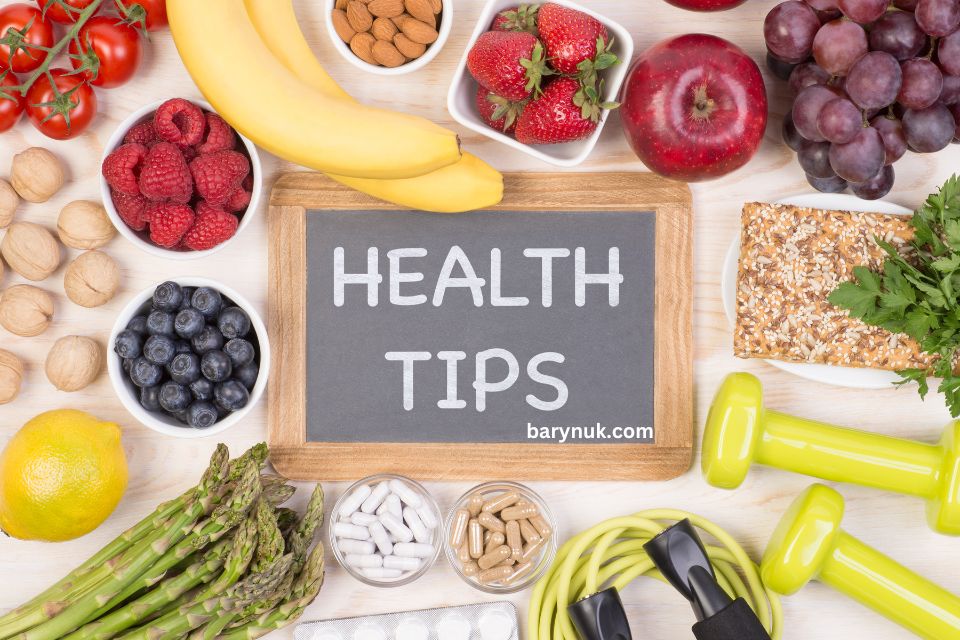Eating healthy can seem confusing and overwhelming at times. With so much conflicting advice out there on diets and nutrition, it’s hard to know where to start when you want to improve your eating habits. The key is not to stress about following strict rules or cutting out entire food groups. Small, sustainable changes to your daily eating routine can go a long way toward better health. This friendly guide aims to make healthier eating feel more manageable by giving you easy diet tips you can actually stick to.
Choose Whole Grains

When reaching for bread, cereal, rice or pasta, opt for whole grain varieties instead of refined grains. Whole grains like whole wheat, brown rice, oats, quinoa and barley contain more fiber, protein and other key nutrients than their refined counterparts, which have been stripped of the nutritious parts of the grain during processing. Try mixing whole grains into some of your usual recipes or swapping out refined grains for whole grains in simple swaps like using whole wheat bread instead of white bread.
Load Up on Veggies

Veggies should take up the most real estate on your plate. They are full of vitamins, minerals, fiber and other good-for-you compounds. Fill at least half of your plate with vegetables and aim to incorporate them into meals and snacks throughout your day. Fresh or frozen vegetables work great – just be sure to avoid extra sauces and dressings that can add unnecessary calories and fat.
Choose Lean Protein
Protein helps keep you energized and full between meals. Choose leaner proteins like skinless poultry, fish, beans, lentils, nuts and low-fat dairy products more often over red meat or processed meats like bacon or sausage. Try meatless Monday with a veggie-packed stir fry, or top your morning oatmeal with almonds and berries for a hearty, protein-powered breakfast.
Read Labels
Flip a product over and read the Nutrition Facts panel to understand what exactly you’re putting into your body. Pay attention to serving sizes, calories per serving, sodium content and ingredients lists. Comparing the labels of two similar items side-by-side makes it easier to choose the healthier option. Get in the habit of checking labels so you can identify hidden sugars, unhealthy fats or excess sodium.
Control Portions
Overeating can easily undermine an otherwise healthy diet. Use measuring cups and spoons to understand appropriate serving sizes of foods you eat often. To avoid portion distortion, serve meals on smaller plates instead of giant dinner plates. Try eating slowly and listening to your body’s fullness cues. Stop when you feel satisfied rather than overly full or stuffed.
Minimize Added Sugars

Eating too much added sugar from sodas, sugary baked goods, candy or other sweets can lead to weight gain and increase your risk for diabetes, heart disease and other chronic conditions. Limit foods high in added sugar and instead reach for more natural sources of sweetness like fruit. Always check the ingredients list for multiple different names for sugar like sucrose, glucose, high fructose corn syrup or cane sugar.
Stay Hydrated
Water helps transport nutrients, aids digestion, flushes toxins and keeps you feeling energized. Carry a water bottle with you for easy hydration all day long. Choose water over high-calorie beverages like juice or soda. Add slices of citrus, berries, cucumber or mint to your water for a flavor boost. Herbal teas are another good option.
Meal Prep
Planning ahead takes the last-minute guesswork and stress out of feeding yourself and your family nutritious meals all week long. Devote time to chopping veggies, batch cooking whole grains and packing healthy grab-and-go snacks and lunches once or twice a week. You’ll be less likely to cave and order takeout or grab fast food when you have healthy options already prepared in your kitchen or fridge when hunger strikes.
Allow Treats
Depriving yourself will only lead to frustration and burnout. Allow yourself small treats that fit into your daily calorie needs so you don’t feel restricted. Have a small piece of chocolate, lick of ice cream or bite of cake, savor it and move on. No food is completely off limits – it’s all about balance and moderation.
Get Moving
In addition to cleaning up your eating habits, getting regular physical activity is crucial for boosting energy levels, supporting brain health and keeping your weight in check. Aim for at least 30 minutes of moderately intense exercise like walking or jogging most days of the week. Try activities you actually enjoy doing whether that’s dancing, hiking, cycling, weight lifting or swimming. Movement matters.
Make Changes Gradually

Practice patience and take things step-by-step. Drastically restricting your diet overnight sets you up for failure once the initial motivation wears off. Make small, reasonable changes over time until healthier choices become your new normal and no longer feel like sacrifice or discipline. Progress over perfection is key – be kind to yourself along the way!
Conclusion
There you have it – an overview of practical diet tips you can start implementing right away without completely flipping your eating habits upside down overnight. With continued practice, patience and self-compassion, adopting healthier eating patterns can become second nature. Remember to keep challenging yourself to try new nutritious foods and preparation methods too. Aim for progress rather than perfection. With these basic guiding principles, you’ll be well on your way to better health.
Tags: diet tips, diet tips plan



Pingback: Embrace a Healthy Lifestyle: Your Gateway to Wellness